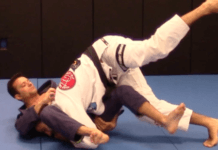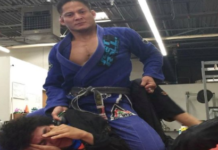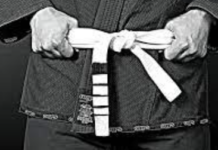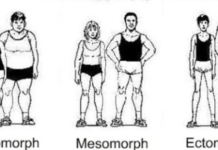Wrestling vs BJJ, which grappling martial art is for you? There is a lot of overlap between BJJ and Wrestling. This difference is due to the rules and the ultimate goal. In this post, we’ll cover the differences between the two disciplines.
Wrestling vs BJJ
Wrestling
In international wrestling, the most conventional sequence for scoring points is as follows:
- Take your opponent down to the mat to establish control
- While controlling your opponent from the top position, pin your opponent (defined by the rulebook as both shoulder blades being flat on the mat).
Any time of scoring sequence in wrestling ultimately does one of the two. If a wrestler doesn’t seem to be able to turn an opponent, the referee blows the whistle and the wrestlers return to the neutral position. Wrestlers are rewarded for pushing an opponent out of the mat (which shows control), taking an opponent down, or exposing an opponent’s back either from neutral or the top position (because in theory, they are “closer” to pinning their opponent). Pins are fairly rare in international competition especially since wrestlers don’t get as much time to work on top as they were given in the past.
BJJ
In BJJ, the conventional sequence for scoring points is as follows:
- Take your opponent down to the mat
- Pass guard
- Pin or mount your opponent
- Submit your opponent
Points are given based on these actions. Because the ultimate goal is a submission, fighting from your back is an acceptable practice (it’s also easier to defend submissions when you’re facing your opponent). Since submissions are illegal and aren’t scored in wrestling, most of the positional differences are based on this one difference.
Similarities
While the end results are different, similarities lie in the principle that a takedown will help you establish control so that you can work for a pin or a submission.
In both styles, there are also moves that skip straight to the end result. In wrestling, you can throw someone from the neutral position with the possibility of working straight for a pin without establishing control on top first. As for BJJ, there are submissions available from the neutral position as well such as leg locks.
Benefits
Wrestlers training in BJJ will benefit from increased mat awareness and scrambling ability because of the scrambles involved in BJJ. Wrestlers also gain the ability to end a real fight with a submission instead of just pinning another person down on the mat for a ground and pound.
Since wrestlers don’t focus on submissions and the current rules for international wrestling don’t give wrestlers much time to work for a pin from top control, wrestlers focus mainly on takedowns. This gives a BJJ practitioner a big opportunity to learn takedowns in serious depth.
Check also:
- Double Leg Takedown: how to do it and most common mistakes
- Ankle Pick: How to set up and Finish this Takedown
- Wrestler (128 lbs) vs Powerlifter (330 lbs) in a Grappling Match
Che is a former collegiate wrestler, member of Thailand’s national freestyle wrestling team, and current combat sports enthusiast. He writes about how to achieve higher physical and mental performance while being on a budget or a busy schedule. You can learn more about Che and his work here.












